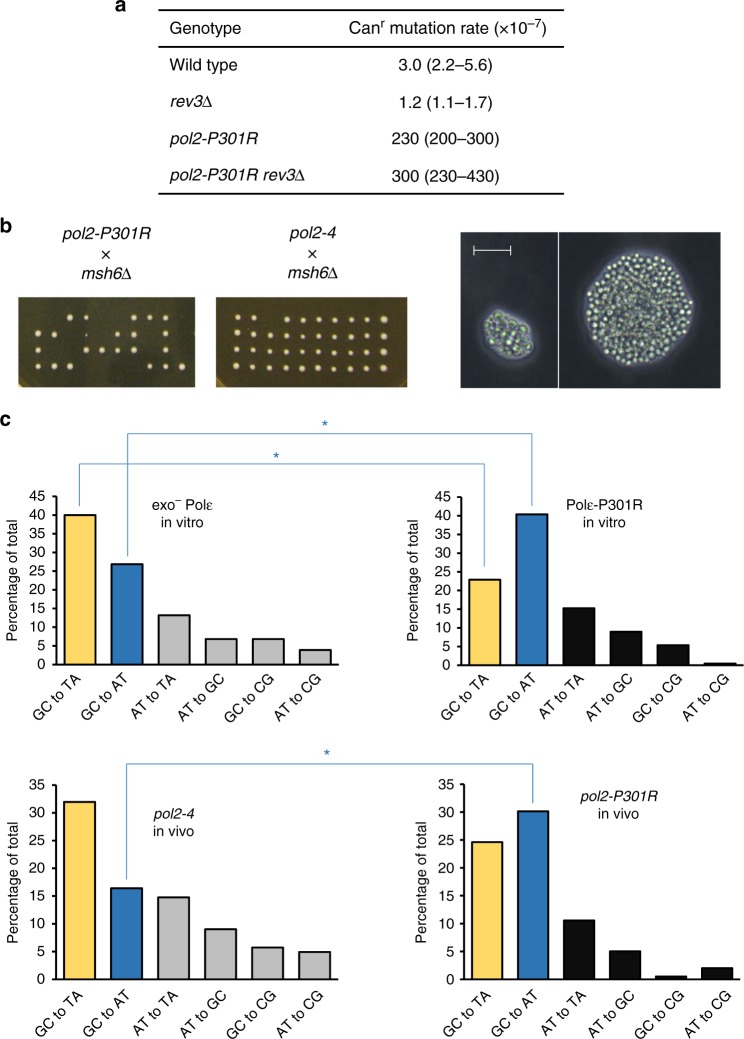Fig. 2.
In vivo evidence suggests that the ultramutator phenotype of pol2-P301R strains results from errors made by Polε-P301R during replicative DNA synthesis. a Mutator effect of pol2-P301R is not dependent on Polζ. Rate of spontaneous Canr mutation was measured in haploid rev3Δ, pol2-P301R and pol2-P301R rev3Δ mutants and an isogenic wild-type strain. Mutation rates are given as medians for at least nine cultures with 95% confidence limits in parentheses. Source data are provided in a Source Data file. b The pol2-P301R shows synthetic lethal interaction with the MMR defect indicative of a replication error catastrophe. Left, tetrad analysis of diploids heterozygous for pol2-P301R and msh6Δ, and pol2-4 and msh6Δ. While double mutants were readily produced by sporulation of POL2/pol2-4 msh6Δ/MSH6 diploids, no viable pol2-P301R msh6Δ spores were obtained from the pol2-P301R x msh6Δ cross. Right, two examples of dead cell groups formed upon germination of the pol2-P301R msh6Δ haploid spores. Scale bar, 20 μm. Representative of two independent experiments. c The error signatures of exo− Polε and Polε-P301R are apparent in the in vivo mutational spectra of pol2-4 and pol2-P301R strains, respectively. Proportions of individual base substitutions generated during in vitro synthesis by exo− Polε (top left) and Polε-P301R (top right) were obtained by combining data for the corresponding reciprocal base-base mismatches from Supplementary Table 1. Proportions of individual base substitutions in the pol2-P301R yeast strain (bottom right) were determined by DNA sequence analysis of 194 Canr mutants containing a total of 199 mutations in the CAN1 gene (Supplementary Table 2). The analogous data for the pol2-4 yeast strain (bottom left) are from54. Asterisks indicate statistically significant differences in the proportions of GC→AT transitions and GC→TA transversions (p < 0.01, Fisher’s exact test)

